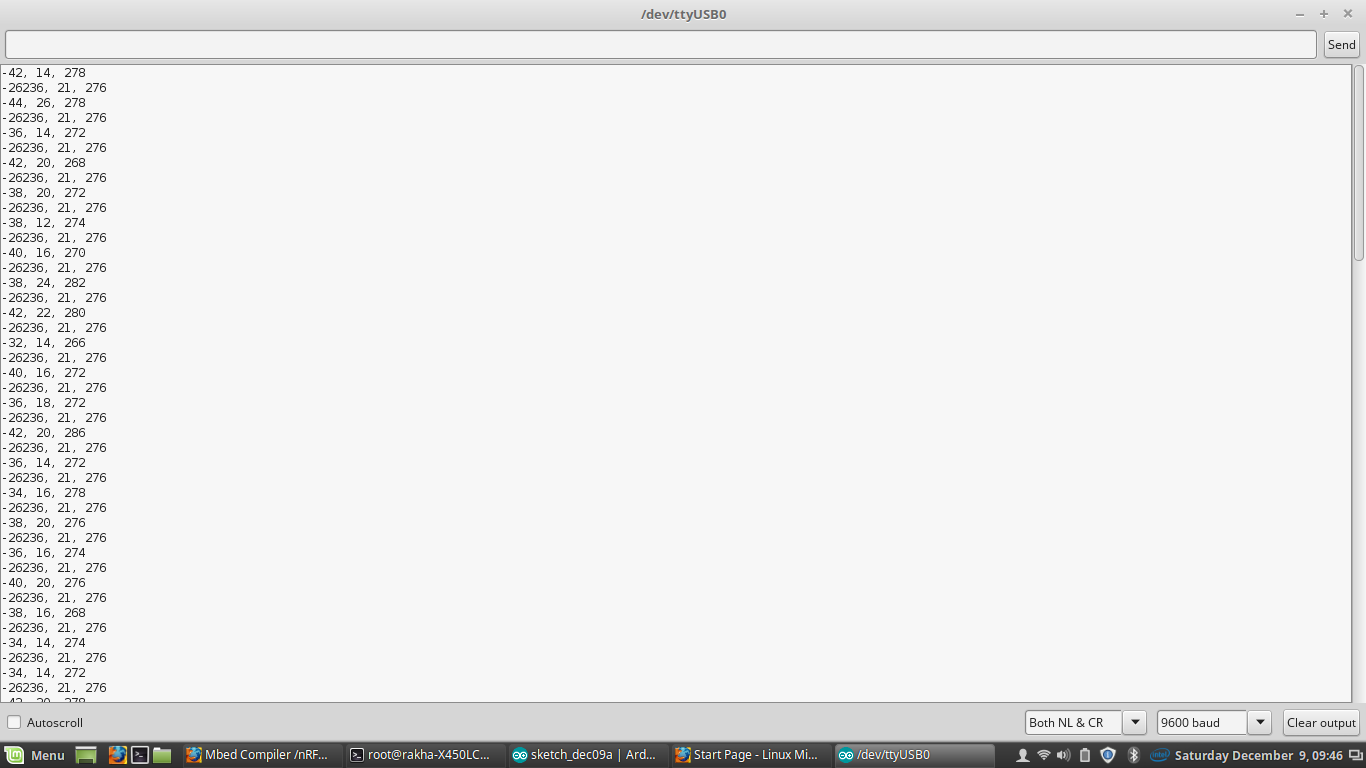Here is calibration of UART data using ADXL345.
and the data is followed by x, y & z value, for example x = -42, y = 20, z = 268. and then after calibrated 10x which is I got mean value from (x,y,z*10 of data)/10.0.. I've got x = -26237, y = -18, z = 278.
and my question is why the data of x value is large to calculated, perhaps it's just maybe around -45 (above/lower).
anyone who can explain to fix it..
here is the code:
int calibratex()
{
int readings[3] = {0, 0, 0};
led1=1;
long int sum1 = 0;
for (int i=0; i<10; i++)
{
accelerometer.getOutput(readings);
xval[i]=(readings[0]); //nilai x adxl345
sum1 = yval[i]+sum1;
}
xavg=sum1/10.0;
led1=0;
return xavg;
}
int calibratey()
{
int readings[3] = {0, 0, 0};
led1=1;
long int sum2 = 0;
for (int i=0; i<10; i++)
{
accelerometer.getOutput(readings);
yval[i]=(readings[1]); //nilai y adxl345
sum2 = yval[i]+sum2;
}
yavg=sum2/10.0;
led1=0;
return yavg;
}
int calibratez()
{
int readings[3] = {0, 0, 0};
led1=1;
long int sum3 = 0;
for (int i=0; i<10; i++)
{
accelerometer.getOutput(readings);
zval[i]=(readings[2]); //nilai z adxl345
sum3 = zval[i]+sum3;
}
zavg=sum3/10.0;
led1=0;
return zavg;
}

